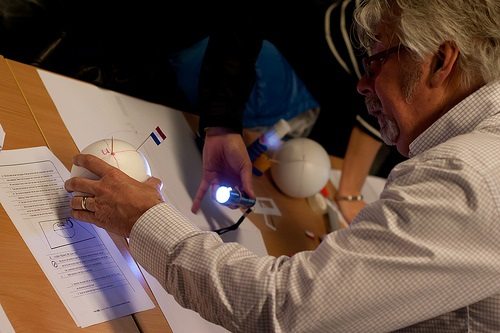
June 17, 2015; National Public Radio, “nprED” and The Guardian
A new effort to improve the quality of America’s teachers was launched on June 16th with the announcement from the Woodrow Wilson National Fellowship Foundation that it was creating the Woodrow Wilson Academy.
According to the foundation’s press release, the Academy will be “designed to transform teacher education as well as school leadership policy and practice nationally. […] In collaboration with the Massachusetts Institute of Technology (MIT), the WW Academy will also serve as an incubator and innovation lab, studying what works and why in preparing teachers and education leaders, and offering new ideas and models to meet the needs of 21st-century schools.”
The foundation has committed $30 million dollars this effort.
In an interview with NPR News, Arthur Levine, the WW Foundation’s current president and the former president of Teachers College, Columbia University, said, “Instead of focusing on courses and credits students need to take, we’re going to focus on the skills and knowledge they need to have to enter the classroom. Most education schools have such low admission standards and are of such poor quality, it would be easier to replace them than repair them. They’re old and dated.”
That concern about improving our teacher training programs is not new. In its 2014 review of teacher training programs, the National Council on Teacher Quality found that “while there are certainly bright spots in the field of teacher preparation, overall there’s a capacity gap between the country’s heightened expectations for teachers and what their training equips them up to do.” And sixty percent of the respondents to a PDK/Gallup poll conducted in 2014 said the entrance requirements for teacher-training programs need to be more rigorous.
In his conversation with NPR News, Levine said the new approach to teacher preparation would focus on “competencies” rather than “seat time.” His hope is that education schools across the country will learn from the lessons of this new approach: “They’ll take our ideas, take our practices, and adopt them themselves.”
But maybe what’s needed is not a new approach—just a long plane ride to Finland.
Sign up for our free newsletters
Subscribe to NPQ's newsletters to have our top stories delivered directly to your inbox.
By signing up, you agree to our privacy policy and terms of use, and to receive messages from NPQ and our partners.
Using the OECD’s Program for International Student Assessment, which triennially assesses student performance in 70 countries as a scale, Finnish schools have ranked at the top, well ahead of our own, since the tests were begun in 2001. Its teacher-training programs have been seen as the model for what will work. In a recent article, Britain’s Guardian newspaper highlighted some of the underpinning of the Finnish approach to training teachers:
“Not only is teacher education in Finland strongly research-based, but all the students…are engaged in research themselves—a point of pride for Patrik Scheinin, dean of the faculty. The course aims to produce ‘didacticians’ who can connect teaching interventions with sound evidence. The task of a good didactician is to disturb the thinking of someone who assumes they know everything about teaching. Just because you’ve been doing something for 20 years and it works for you doesn’t mean it works for other teachers, other students, or in other subjects.”
Diane Ravitch, Research Professor of Education at New York University and noted critic of current efforts to “reform” public education, has observed that the Finnish system of teacher-training has high expectations for their students:
“Those who are accepted have already taken required high school courses in physics, chemistry, philosophy, music, and at least two foreign languages. Future teachers have a strong academic education for three years, then enter a two-year master’s degree program. Subject-matter teachers earn their master’s degree from the university’s academic departments, not—in contrast to the U.S.—the department of teacher education, or in special schools for teacher education. Every candidate prepares to teach all kinds of students, including students with disabilities and other special needs. Every teacher must complete an undergraduate degree and a master’s degree in education.”
But much of Finland’s success in training a corps of skilled teaching professionals is not new to our country. Finnish Educator Pasi Sahlberg, visiting Professor of Practice at Harvard University’s Graduate School of Education, recently wrote, “The irony of Finnish educational success is that it derives heavily from classroom innovation and school improvement research in the United States. Cooperative learning and portfolio assessment are examples of American classroom-based innovations that have been implemented in large scale in the Finnish school system.” What Sahlberg advises as “a good step forward would be to admit that the academically best students are not necessarily the best teachers. Successful education systems are more concerned about finding the right people to become career-long teachers.”
The new Woodrow Wilson Academy may be able to build these principles into its curriculum when its first class begins its coursework in 2017. But it will need help from political and educational leaders to replicate another part of Finland’s successful formula. The Guardian’s recent look at the Finnish system pointed out that “the high-level training is the basis for giving young teachers a great deal of autonomy to choose what methods they use in the classroom. In Finland, teachers are largely free from external requirements such as inspection, standardized testing and government control; school inspections were scrapped in the 1990s.”
This runs against the grain of our national school reform program, which has sought to narrow and standardize curricula and relies heavily on standardized testing as its method for performance assessment.—Marty Levine













